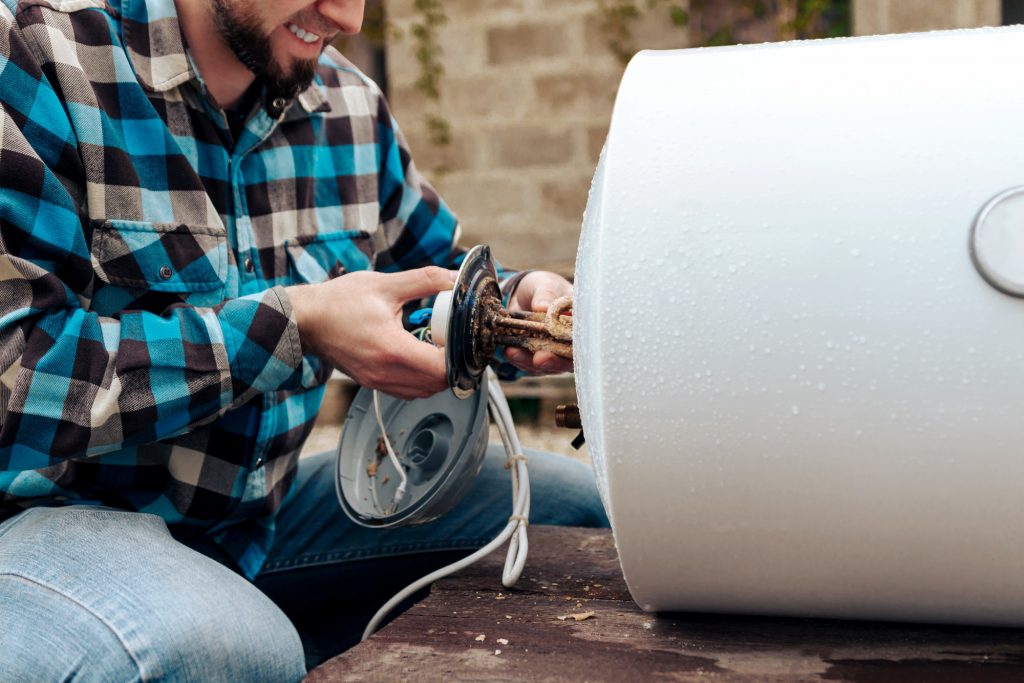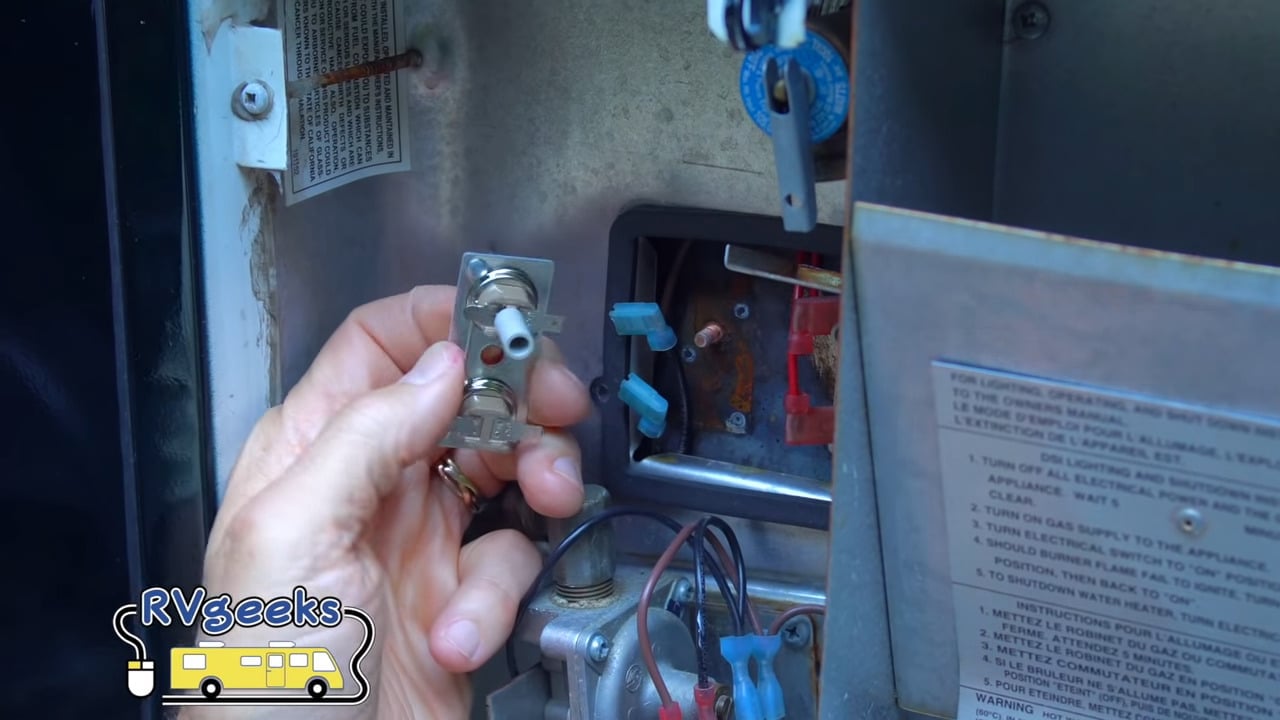No Hot Water? Common Causes & Tips to Deal with Yourself
No Hot Water? Common Causes & Tips to Deal with Yourself
Blog Article
In this article down the page you'll find lots of helpful insights in relation to Hot Water Heater Repair.

Many modern-day residences use an electric water heater for their furnace, because of its benefit and convenience of use. Nevertheless, just like any other electrical devices, issues may emerge with its use, suddenly. It can be really irritating to get up to a cold shower as opposed to a warm one or having your bath with water that isn't warm sufficient or even also warm. Whatever the case might be, water heater problems can be fairly stressful. Fortunately, we have actually made a list of feasible options to your water heater concerns. There are a number of variables that might cause most of these issues, it could be a problem with the power supply, the electric heating element, or the thermostat. Prior to doing anything, ensure you shut off the major power supply for security. Whatever the trouble is, getting it repaired must not pose excessive of a concern if you follow these actions:
Call A Professional:
If after replacing all damaged parts as well as resetting your temperature level, the water heater still isn't working, you might need to get in touch with a specialist plumber for a professional viewpoint. The trouble with your heater could be that the hot and cold faucets have actually been switched or it may be undersized for the quantity of warm water needed in your home. Whatever the instance might be, a professional plumber would assist address the problem.
Examine Your Power Supply:
As fundamental as this might seem, it is really necessary. Without sufficient power, your hot water heater will not work. So the first thing to do when your water instantly stops working is to verify that it isn't a power trouble. Check if the fuse is blown out or the breaker stumbled. If the circuit breaker is the problem, merely turn it off and on once again. Change any broken or damaged fuse. Examine the appliance with power after these modifications to see if it's currently functioning.
Check Your Thermostat:
If your water heater still isn't functioning or the water appearing isn't warm enough, you may require to examine the temperature level settings on your upper thermostat. Make sure the breaker is turned off before doing anything. Open the gain access to panel as well as press the red switch for temperature level reset above the thermostat. This ought to assist heat the water. Transform the circuit breaker back on and inspect if the issue has actually been settled.
Check the Heating Element in the Water Heater:
If it's not a power issue, then attempt checking out your heating element if it is still functioning. Examine each of your burner to make sure the issue isn't with any one of them. If any one of them is malfunctioning, change that component and afterwards examine whether the warm water is back on.
Conclusion
Water heater problems are not always major. Many of them are due to minor issues like a blown fuse or worn-out heating element. Replacing the faulty parts should do the trick. However, if you are still unable to solve the problem, give a call to your nearby plumber to find to get it taken care of.
Common Water Heater Issues and What You Should Do
What Type of Water Heater Do You Have?
Before we begin it’s first important that you identify the type of water heater you have on your property. There are two main types of water heaters out there: conventional and high efficiency.
Both of these types of products typically use either gas or electricity to heat power. There are also solar water heaters that use a thermal collector on the roof or yard to heat the water.
While these models are not as common, they can cut heating costs in half. In this article, we will focus on conventional and high efficiency.
How Do My Electric and Gas Water Heater Work?
Though they look similar, electric and gas water heaters work very differently. It’s important to know their basic function because often problems can be specific to the heating source.
In the electric model, a thermostat on the side of the machine detects the temperature of the water in the tank. When the temperature needs to rise electricity flows to a heating element suspended in the water.
Gas models also use a thermostat device — typically with a mercury sensor at the tip and an additional sensor called a thermocouple. The thermocouple detects whether the pilot light is on and controls the flow of gas.
When the thermostat drops below the appropriate level gas is released which becomes ignited by the pilot light. The flame heats the bottom of the water tank which causes hot water to rise and cold water to drop.
This natural circulation continues until the water reaches the desired temperature. Then, the thermostat triggers the gas control valve to shut off the flow of gas.
What Are the Most Common Issues and How Do You Fix Them?
n this section, we’ll go over some of the more common problems that people deal with when their water heater starts acting up. Keep in mind that some problems, like a broken pilot light, are specific to gas water heaters.
Also, remember that the best defense against water heater issues is regular maintenance. Check out some of these great tips for improving the lifespan of your water heater.
Not Enough Hot Water
This problem is common if you live in an apartment or a house with a lot of people. Too many people use the hot water supply in the tank and the machine struggles to produce more in a timely fashion.
There’s a variety of solutions to this problem, but an easy method is simply to adjust the temperature dial on your heater and wait thirty minutes.
If you have an electrical water heater, then a power surge caused by the device may cause the circuits to trip.
You should contact an electrician quickly if this issue keeps happening — it means wiring issues are causing the machine to draw more power than it needs. You may also want to try draining your water heater.
The process of draining removes the hard water sediments that cause your machine to run less efficiently. If you want a full walk-through of how to drain water your water heater tank, then make sure to read our article before you begin.
If none of these solutions fix the problem, then the issue likely lies in a malfunction component — likely a pressure relief valve or heating element.
Changing Water Temperatures
Often it’s a joke that some showers have two temperatures: scolding hot and ice cold. Unfortunately, this common feature can be a symptom of a bigger problem.
If you notice this temperature change when you shower or do the dishes, then you should check the thermostat on the side of your water heater. First, make sure it’s set to your desired temperature.
If it still exhibits drastic temperature changes, then you may need to replace the thermostat or the heating unit inside the product. The problem may also lie in the size of the product. Remember that tanks should hold roughly 20 gallons of water per person living in the house.
A Leak in the Water Heater
A water heater leak can cause serious water damage to the floor and electrical components near the device. Remember that you should always turn off the gas or electricity and let the device cool down before inspecting for a problem.
You may be able to fix the leak by tightening screw and pipe connections as these are common causes of minor leaks. However, if you notice a substantial leak at the base of the water heater, then you should contact a technician to inspect and replace it.
Rumbling Sounds
Rumbling sounds are a sign of a serious water heater issue. Unusual sounds may come from burning sediments or malfunction heating components. If you think you hear your heater boiling, then you should turn it off immediately.
This symptom is a sign of building pressure in your tank which could cause it to explode. You can likely solve this problem by draining your tank and clearing out any sediments. However, if the problem persists you may want to call a professional.
Rusty or Smelly Water
If your water smells then there is likely rust or bacteria in your water tank. These problems can cause orange discoloration and a smell like rotten eggs. However, you should first make sure that your tank is the issue and not the water source itself.
Run cold water and see if the smell persists. If the smell only comes from hot water, then the problem is the water heater. If not, then it’s the water source. If the problem comes from your tank, then it’s likely a malfunctioning anode rod.
An anode rod is responsible for cleaning any bacteria from the tank, so this is the most likely symptom. Unfortunately, changing an anode rod requires extensive knowledge of the system. As such, you will likely need the help of a professional.
Poor Water Flow
Changes in the water pressure that comes out of your shower or sink is likely a sign of sediment buildup at the bottom. Follow our previous advice — drain the tank and flush out any of the sediments.
If the problem persists, then you’ll need to check the pipes around your device. Hire a professional plumber to clean or replace the pipes around the water heater.
No Pilot Light
Gas water heaters require a pilot light to ignite the gas that warms the water. If your pilot light is out, then try reigniting it by repeatedly switching the ignitor switch. If your pilot light continues to go out, then it’s a symptom of a larger problem.
You can first try cleaning it — sometimes dirt or grime can buildup and snuff out the spark.
However, the problem can also cause things like malfunctioning thermostats, broken gas valves, or air in the gas line. First, try cleaning it and if it still goes out, then troubleshoot the various parts and replace whichever one malfunction.
https://happyhiller.com/blog/common-water-heater-issues-and-what-you-should-do/

I was made aware of that write-up on Hot Water Heater Repair through a friend on another web page. Sharing is caring. You never know, you might be doing someone a favor. Thank-you for your time invested reading it.
Booking
Report this page